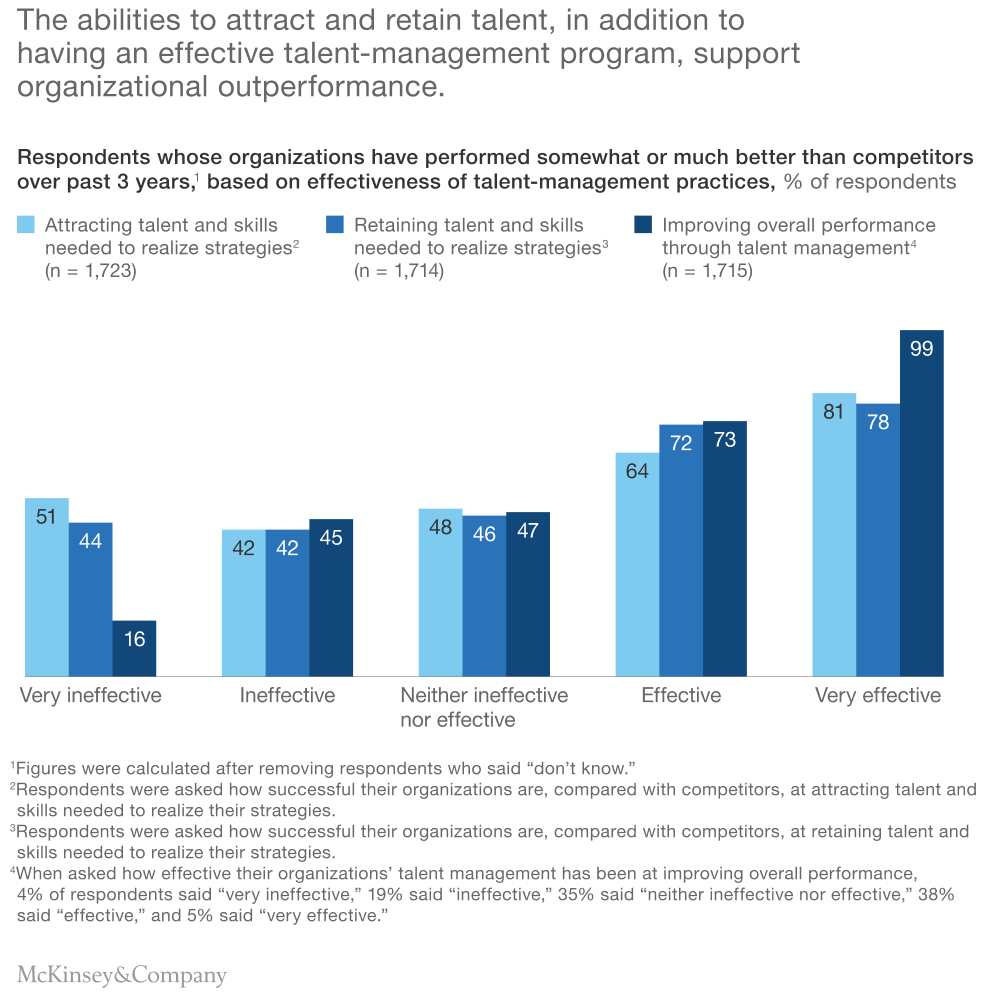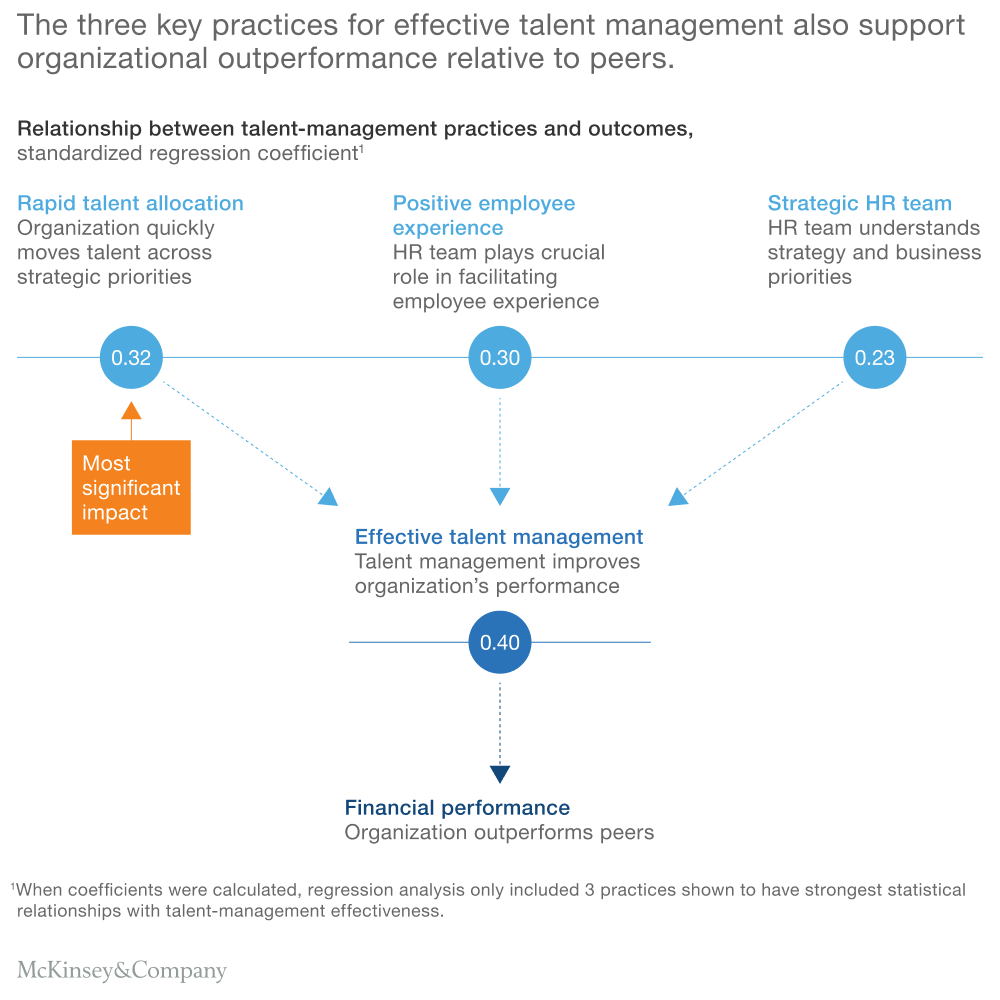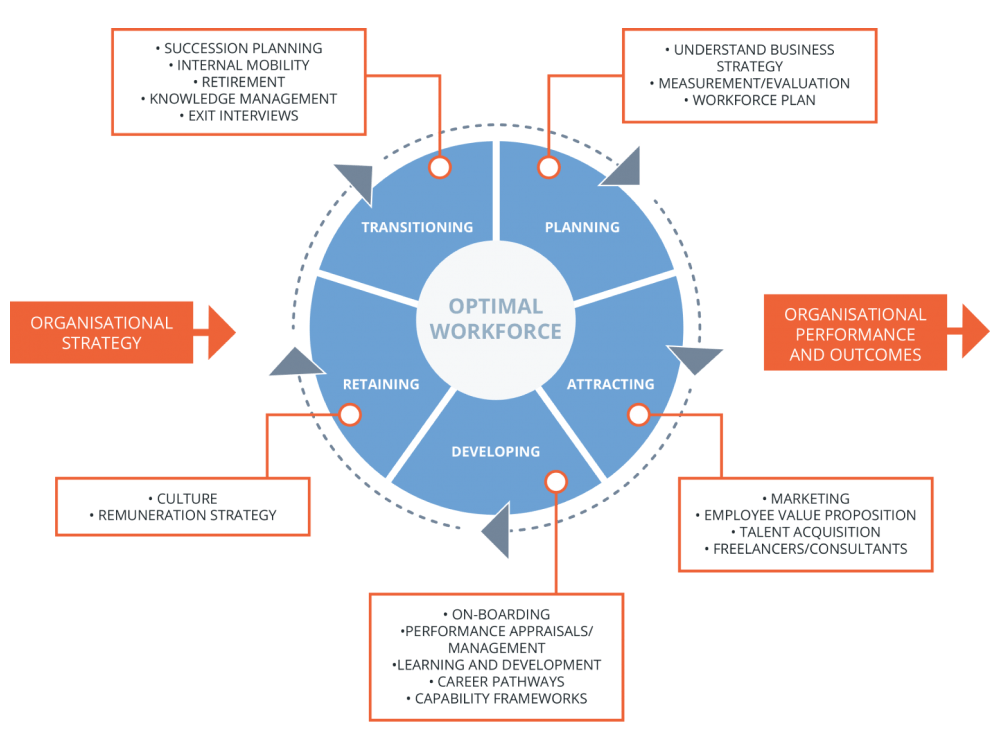Talent management
Learn what talent management is, and its model. Discover the talent management process and learn how to build a working talent management strategy.

Human resources plays many roles in a company. The department manages employee relations, talent acquisition, payroll, onboarding, and much more. One more duty of HR is talent management.
This is key to keeping your organization moving ever closer to its goals.
Discover:
- What is talent management?
- The importance of talent management
- Talent management model
- Talent management strategy
- Building your talent management strategy
- The talent management process
- The 7 steps of a great talent management process
What is talent management?
Talent management is a constant process that involves attracting and retaining high-quality employees, developing their skills, and continuously motivating them to improve their performance.
The primary purpose of talent management is to create a motivated workforce who will stay with your company in the long run. The exact way to achieve this will differ from company to company.
Talent management in HR
Talent management naturally encompasses many of the responsibilities of HR.
All the same, it is not enough to expect that just because you have an HR department, you are managing talent.
You need to have a talent management strategy in place designed just for your company to gain optimal results.
The importance of talent management
The simple answer is because it capitalizes on employees — arguably, the most important asset of your company.
Talent management helps you maximize the value of employees.

Source: www.mckinsey.com
As you can see from the graph above, there is widespread agreement that talent management is effective (or even very effective) at attracting and retaining talent as well as improving overall performance.

Career development plan template
This template helps employees and leaders plan together for career growth: set goals, assess skills, and make a plan.
Download nowThere are a few main reasons why this is the case.
1. It helps businesses improve performance
With top specialists in your organization, you can reach any goal.

Source: www.mckinsey.com
Talent management is most effective of all when it combines three key components: rapid talent allocation, positive employee experience, and a strategic HR team.
2. It allows companies to stay competitive
By hiring and developing talented employees, your organization becomes stronger and better prepared to face changes and risks.
3. It drives innovation
New technologies are always hitting the scene, whatever your industry. Talented employees are able to find ways to harness the capabilities of new tools and solve problems or come up with original ideas.
4. It helps form productive teams
The appropriate talent management strategy will allow you to form a more productive team. This is far more useful than just having a bunch of creative and talented people in your organization.
5. It decreases turnover
When employees feel valued at a company, when they know they will have plenty of opportunities to grow in the business, they are less likely to seek work elsewhere.
6. It leads to strong employer branding
Talent management brands your company as an employer. This helps you to attract the best candidates for future hires.
7. It motivates others to grow
Having inspiring talent on your team will motivate other employees and help them grow.
Talent Management Model

Source: expert360.com
Whereas there is no standardized model for talent management, some HR professionals have proposed excellent models that any company can use.
However you choose to develop your model, it must include the following.
1. Planning
Planning aligns your talent management model in line with the overall goals of your organization.
Only with the correct planning can you ensure that you seek talent with the right skills and experience. In addition, it assesses current employees to see what is working well for the company.
For instance, if employees with certain characteristics tend to stay at the organization for longer, you should plan to hire more workers like them.
2. Attracting
It is not always as simple as when one person leaves the company, you start a search for someone else to fill the role.
For instance, your needs may change or employees may take on new responsibilities. Talent management ensures that you always have sufficient staff to carry out all your operations and prevent heavy workloads that could cause demotivation.
The right strategy will attract just the kind of workers you want at your business. Such hires will be driven, skilled, and seeking to advance within the company.
Attracting talent is all about branding your company as an employer. You’ll need to find ways to increase visibility in ways that allow you to present company as a best place to work. The main consideration here is to make your business more approachable.
Even if you choose not to hire someone for a particular position, you still need to create a positive experience. This will give you the opportunity to hire these candidates for other jobs or use them as ambassadors to acquire other talent.
3. Developing
The development part of the model involves taking steps to help talent grow within the company.
It should be aligned with the employee development plan and includes identifying roles where particular employees could move to in the future as well as considering how to expand workers’ skills and knowledge to fulfill new challenges facing your organization.
Talent management also looks at what will keep employees at your company enthusiastic and willing to go the extra mile. It is necessary to provide employees with value.
Motivation also requires the correct onboarding — to give new hires a great impression of your company from the very beginning. This will increase the chance that they stay with the company and work hard.
4. Retaining
Another purpose of talent management is to keep people at your company for longer.
Employees need to continue feeling that the company is an enjoyable, meaningful place to work.
Through training and other types of engagement, employees have the chance to create a career without leaving the company. You may achieve this by focusing on compensation (monetary and otherwise) as well as company culture.
5. Transitioning
After hiring and developing their skills, you need to plan for employees’ transitions.
Your aim at this stage is to keep their knowledge within the company — this is called knowledge management.
You need to have a plan in place to promote employees or move them to another role, department, or office. If a worker does decide to leave, you need to know why.

Career development plan template
This template helps employees and leaders plan together for career growth: set goals, assess skills, and make a plan.
Download nowTalent management strategy
A talent management strategy is based on the talent management model. It should match your organization’s goals and clearly define what type of talent you need.
You organize the talent management process based on the talent management strategy.
There are few different types strategies you can choose from.
Strategy #1: Hire only top employees
The advantages of this strategy are obvious:
- You immediately receive top talent.
- The employees will perform well and probably reach high performance faster.
- You are able to grow your company faster.
- You are more prepared for challenges and risks.
However, there are some disadvantages:
- It’s expensive, and will cost you even more if you end up needing to hire someone else.
- It could be more difficult to retain top talent.
- The hiring process may take longer, as you’ll probably want to select from a wider pool of candidates.
- It can be challenging to manage team of top talent.
- Having too many top performers on a team can lead to competition and result in underperformance.
Strategy #2: Hire promising specialists and develop them
This second option has a couple advantages:
- You can find talent faster. This may be necessary if you are in urgent need for talent and have insufficient time to search for top employees.
- You will likely save money on salaries.
- The employee has the potential to become a skilled and loyal professional.
- You can hire two, or even three, promising specialists for the same amount as for one top performer.
The main disadvantages are:
- Your company may grow slower.
- Compared to top talent, these hires lack of knowledge. This can lead to lower performance.
- You may need to hire another specialist if the employee cannot handle the role.
- It requires a larger investment in development.
- The strategy may fail entirely and you’ll need to revert to option 1.
Strategy #3: Combine strategies 1 and 2
This quote describes the strategy best:
“Your team’s strength is not a function of the talent of individual members. It’s a function of their collaboration, tenacity, and mutual respect.”
Finally, the pros of combining the two above are:
- It gives you the best of both worlds.
- It also allows you to take advantage of a combination of new hires and existing talent.
- Having top talent and potentially good specialists (e.g. young employees) will help the specialists grow faster and motivate them.
- It leads to knowledge transfer — top talent can teach other employees.
All the same, there is one con:
- If you have specific requirements (such as you are in urgent need of growth or if you are on a tight budget), sticking to a single strategy may be more appropriate.
Building your talent management strategy
Lastly, before you go ahead and launch your recruitment and talent management strategy, make sure you include the essential components of a talent management strategy.
1. Know what your talent management strategy is for
Every organization has its own unique goals. Whether they relate to better performance or higher revenue, your goals need to be clearly stated and achievable. You also need to know exactly how employees will play a role in helping you meet your targets.
2. Measure the results
You need to know how to measure results to see if your strategy is working. Define the metrics you’ll use and how often you’ll take measurements.
3. Assign responsibilities
Much of the talent management strategy is down to HR, but other people at your company will also need to be involved. For instance, C-level executives are responsible for succession planning.
4. Communicate with employees
Make sure your employees are clear about where they stand and know what is expected of them. Talk to them about their career goals to ensure that your company is creating the right opportunities.
The talent management process
Now you have an understanding of why you need talent management and what it involves. Next, you need to take a look at the talent management process itself and learn how to apply it to your company.
What is the talent management process?
The 7 steps of a great talent management process
The following steps cover what you need to do to develop a continuous talent management process for your organization.
It covers how to find the most talented people available and then help them stay in your company.
Step 1: Specify what skills you need
What is the first step in the talent management process?
Before you can go any further, you must determine what kinds of hires you need and what requirements they should fill.
Consider if it would be possible to teach existing employees to avoid the need to hire anyone new.
Step 2: Attract the right people
There are several stages to attracting talent:
- Create targeted advertisements and post them on top job sites — HR branding is helpful here.
- Plan interviews and other means to identify the best person for the job. In addition to regular questions, consider using personality assessments, references, and tests that require candidates to perform in real-life situations.
- Hire your top choices.
Step 3: Onboard and organize work
Help new employees feel orientated by being ready for them as soon as they enter the company.
Know what tasks you will set them, have training sessions scheduled, and assign current employees to support new workers settle in.
Step 4: Organize learning and development
Remember, it is often easier to develop the skills of your current employees than to hire new talent.
Plus, even if you do hire top talent, they will likely want to learn something in their new role.
Plan ways for your workers to learn and grow, such as through conferences, courses, and a learning management system to create a learning environment.
Step 5: Hold performance appraisals
Checking employee performance regularly allows you to see if workers could manage additional responsibilities.
This could save you hiring new talent and it may help an employee prepare for a promotion.
Step 6: Strategize to retain your best talent
Keep employees satisfied at work through promotions, benefits, motivating tactics, ensuring job satisfaction, and improving company culture.
Step 7: Plan for successions
Nurture employees for successions, such as for when a senior member of staff retires.
Enable employees to perform to their best through continuous learning opportunities, including knowledge management.
If an employee decides to leave the company, conduct an exit interview to find out what went wrong — this will help you prevent the same issue occurring again in the future.
Conclusion
You need to stop assuming that you already have talent management covered just because you have HR at your company. Talent management rarely happens naturally.
You need a strategy that is tailored to your business alone. Only like this will you obtain and retain top talent and gain a competitive advantage over other businesses in your industry.

Build a learning culture: a practical workbook for your organization
Upgrade your organization’s learning culture with clear, actionable strategies to address the challenges.
Download workbook



